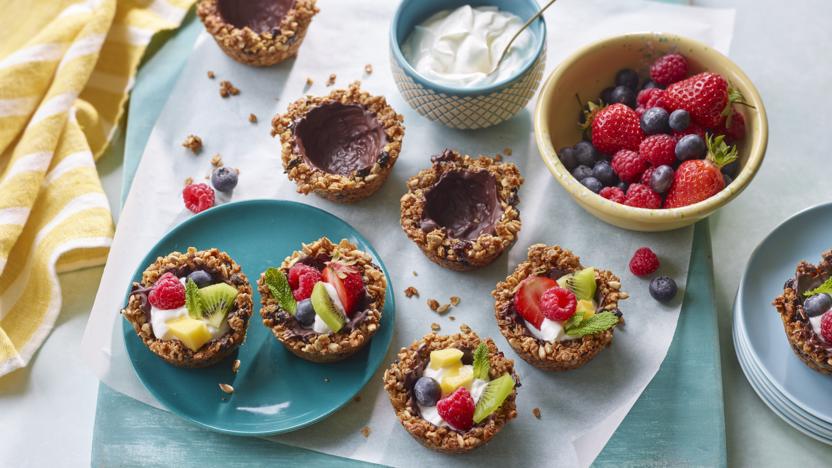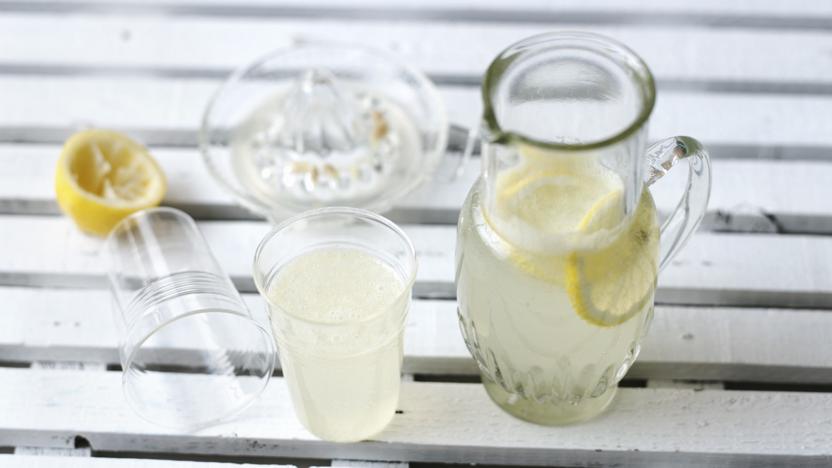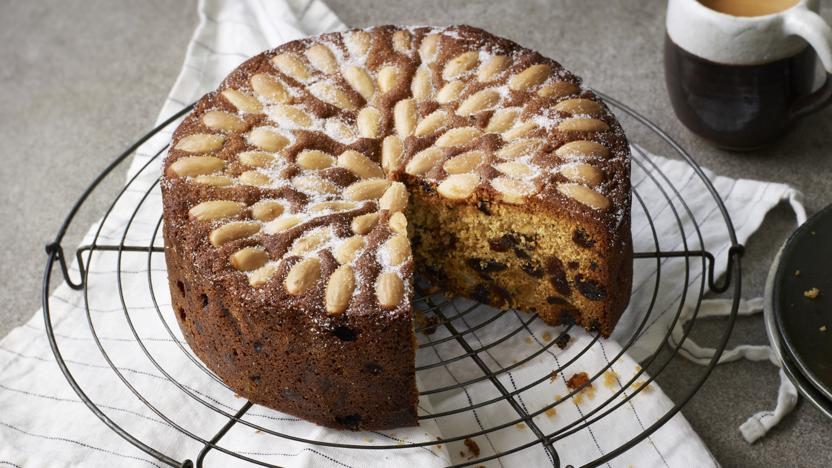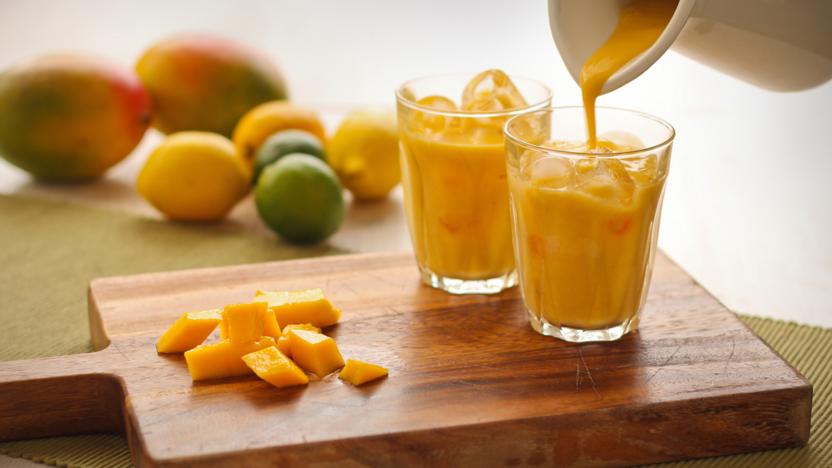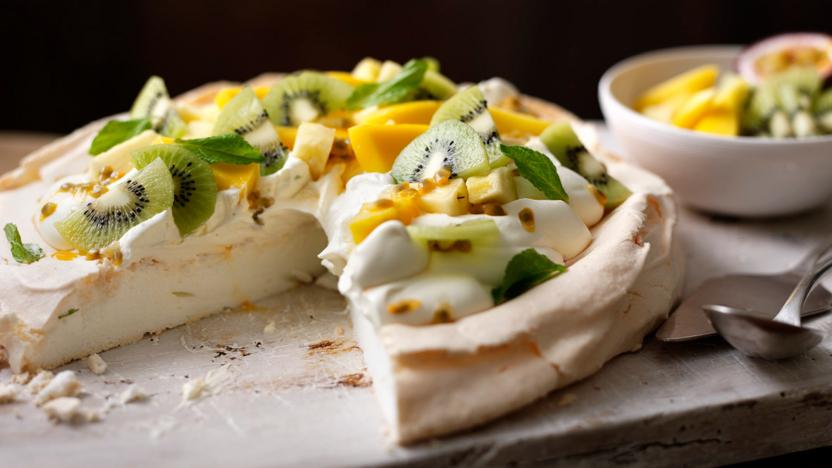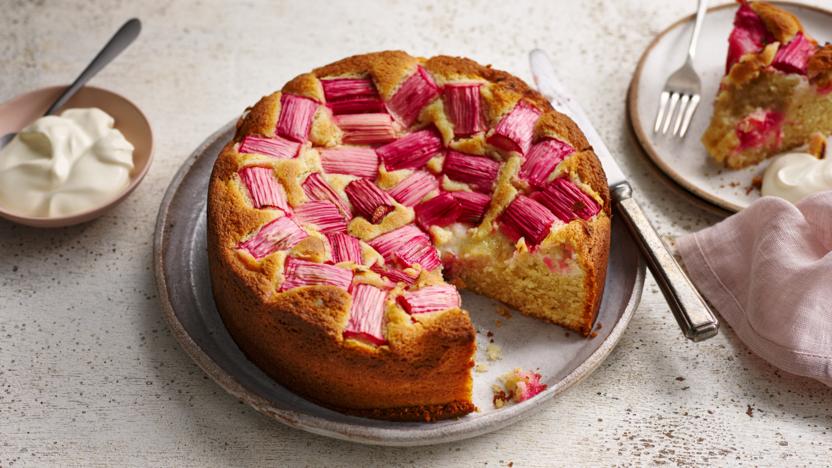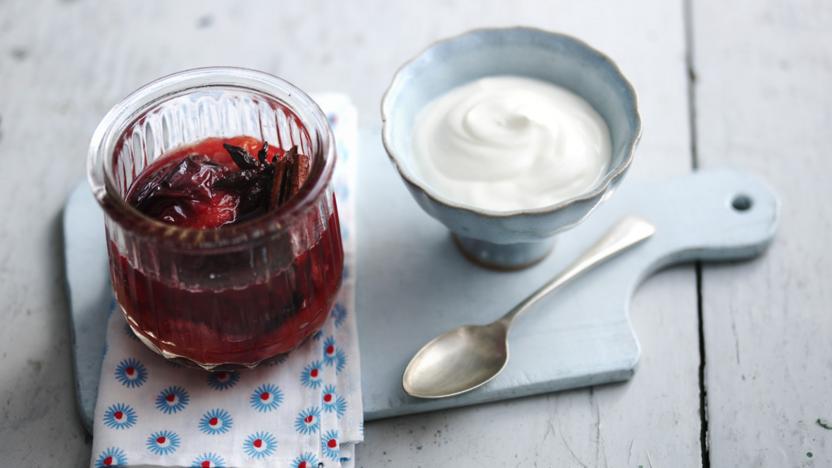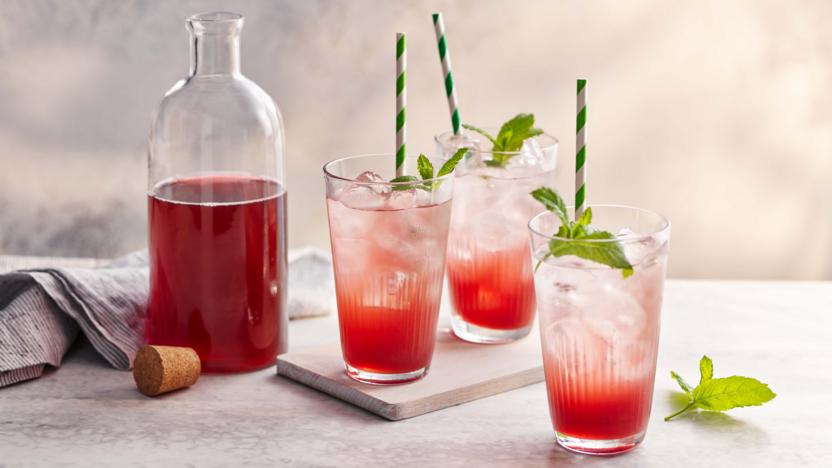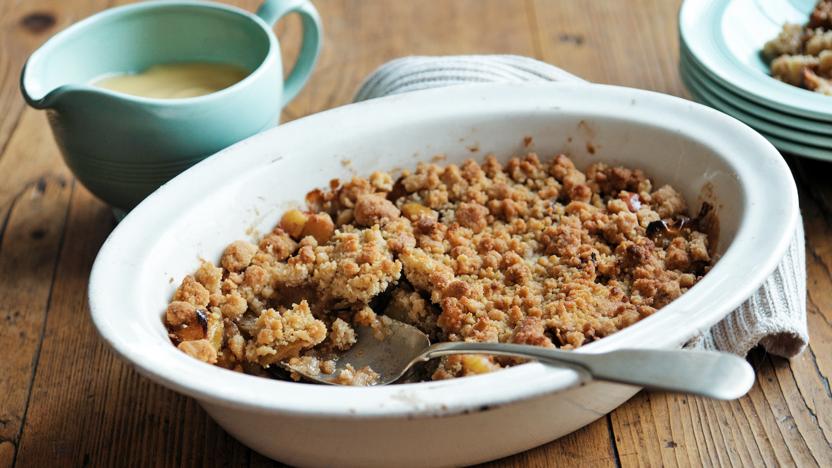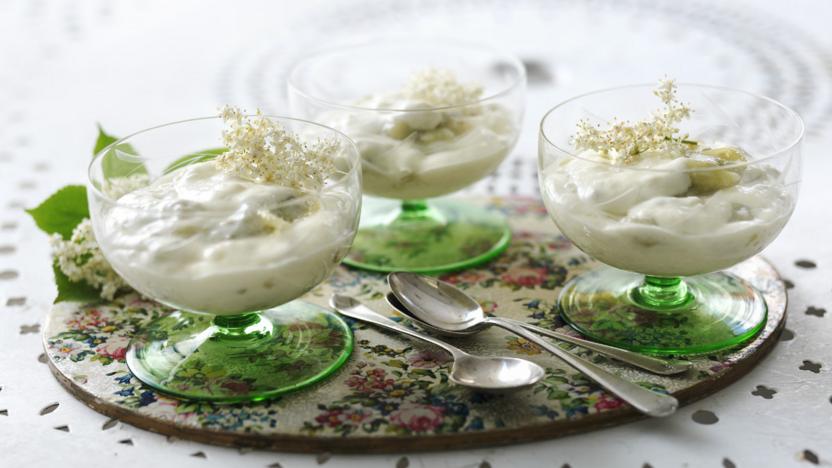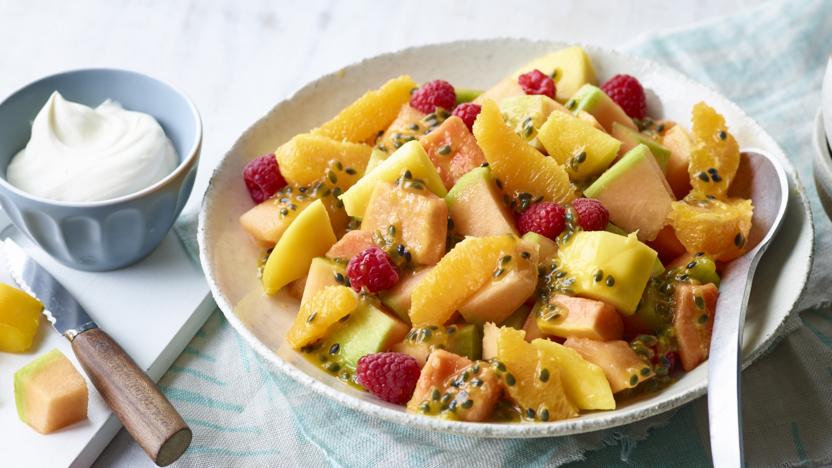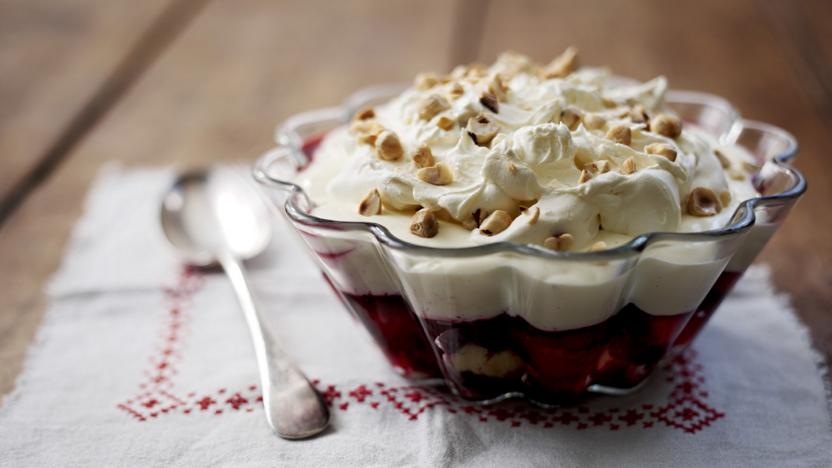Fruit recipes
Fruit can be divided into the following groups: tree and stone fruit; citrus fruit; soft fruit and berries; and exotic fruit.
Vary this easy fruit salad with whatever fruits you can find in the shops. Tropical fruits make a nice addition too such as mango, passionfruit or even persimmon or dragon fruit. Skip the syrup if you don’t have time.
Each serving provides 159kcal, 1.5g protein, 36g carbohydrate (of which 35g sugars), 0g fat (of which 0g saturates), 4g fibre and 0g salt.
More fruit recipes
Buyer's guide
Fruit should look fresh and appetising. Choose fruit that's plump, firm, heavy for its size and unwrinkled. Smell is often a good indication of ripeness too, as is gently applying pressure to the fruit - there should be some give. Avoid any fruit that has signs of mould or wetness and make sure the skin isn't bruised, split, broken or damaged by insects. Don't be put off buying odd-looking or uneven-shaped fruit - sometimes they taste even better than the picture-perfect ones selected by supermarkets.
Whenever possible, buy home-grown fruit in season - food that has been grown and harvested in its natural season and environment will have a depth of flavour and texture that can't compare to something that has travelled far or grown outside its traditional season. Cost is another factor: a couple of weeks into a product's season, prices fall. Less obvious are hidden costs such as 'food miles' (the measure of the distance a food travels from field to plate). This travel adds substantially to the carbon dioxide emissions that are contributing to climate change. Purchasing locally grown, in-season vegetables can greatly reduce the impact on the environment and helps support local producers and rural communities.
Organic agriculture avoids the use of artificial fertilisers and pesticides and uses traditional methods such as crop rotation and natural fertilisers. However, the price of organic fruit can be high, and some of the organic produce sold in Britain is imported, which impacts on the environment in a different way. The bigger supermarkets have specific organic sections, and there are also specialist shops, box schemes and farmers' markets selling fresh organic produce. When buying organic produce always look for the logo of certifying bodies such as the Soil Association.
Storage
To speed up ripening, pop fruit into a brown paper bag and store at room temperature. Adding an apple or banana will help because these emit a harmless gas that accelerates the process. Soft fruit deteriorates quickly, but will keep for a couple of days in the fridge. Fruit with even the slightest bruise will rot, and the rot will quickly spread to neighbouring fruits, so throw out any bad ones or eat them straightaway.
Most fruit freezes well and can be stored frozen for six months and even up to a year. Inevitably some deterioration will occur, but with correct care it can be kept to a minimum. To freeze, spread the fruit onto a tray in a single layer and, once frozen, transfer it to polythene bags. Alternatively, if you're planning to use the fruit for puddings or jam, toss the prepared fruit in a little sugar, transfer to a freezer bag, extract the air, tie securely and freeze. The sugar will absorb juice that runs from the fruit and will become syrupy on defrosting. Soft fruit and apples freeze well, as do fruit purees and stewed fruit. Stone fruits usually become very soft once thawed. An exception is strawberries, which turn to mush when you defrost them.
Preparation
Most fruit can be made into jams, jellies, pickles and chutneys, or can be bottled whole. The most suitable method of preserving depends on the type of fruit and its quality and ripeness. Under-ripe fruit is fine for chutneys, jams and jellies but over-ripe fruit is only good for making chutney and shouldn't be used for making jam.
Fruit juices and smoothies are a great way to enjoy a fruit fix. Smoothies are best thickened using banana, milk or yoghurt whereas fruit juices can be enjoyed purely as they are, or with a dash of soda water or lemonade to add sparkle. Experiment with different combinations of your favourite fruits. Smoothies can be made in a jug blender. Juices can either be squeezed by hand or made with a special juicer.
The fierce heat from a grill or barbecue concentrates the sugars and can cause fruit to blacken before it's cooked through, so you'll need to keep an eye on it - but the results can be a revelation. Thread small pieces of evenly sized fruit on to skewers to stop them falling through the barbecue rack or grill large slices of fruit such as pineapple or mango.
Although there are safe levels of pesticides to which producers must adhere, routine tests sometimes find levels that exceed them. Washing fruit in water, or water with a little mild detergent and rinsing thoroughly, removes some of these treatments. You can also peel the fruit; however, many nutrients are found just beneath the skin.

